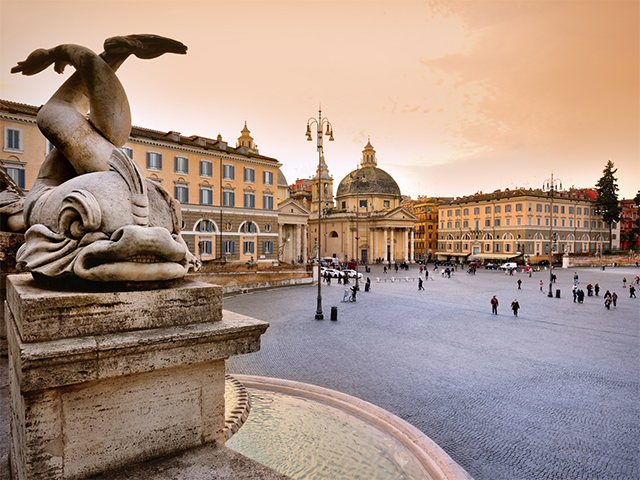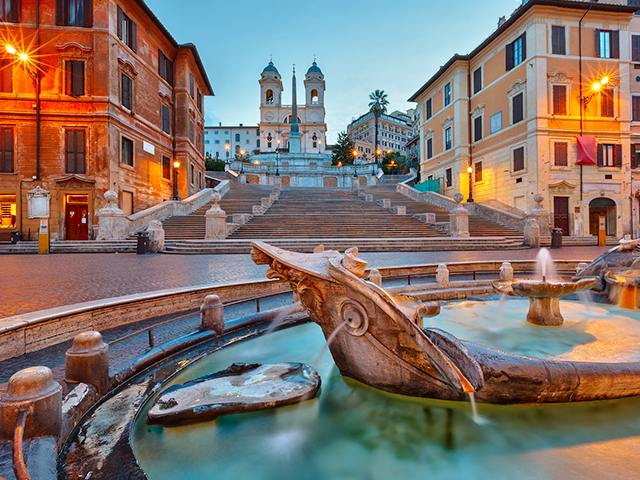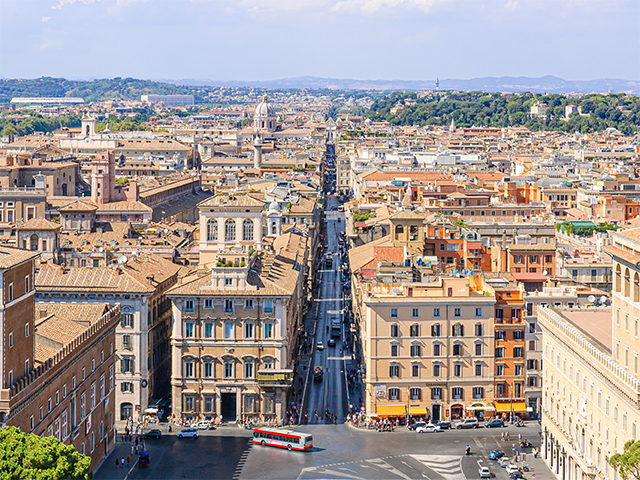Basilica of St. Peter in the Vatican
Everything about the Basilica of St. Peter: history, art, the Pietà by Michelangelo, the dome and so many useful informations about opening hours, tickets and how to get there.There is no doubt: the Basilica of St. Peter is absolutely the largest church in the world.
The great seat of the papacy is rightly considered the mother of all churches. From its balcony Pope Francis looks at the square every Sunday morning to bless the faithful.
The Basilica of St. Peter is simply immense! Some data? 130 meters high, 190 meters long and an overall surface area of over 22,000 square meters! The structure can host around 20,000 people, 45 altars, 11 chapels in addition to containing some of the most important pieces of art in the world.
BOOK YOUR GUIDED TOUR TO THE BASILICA OF ST. PETER
THE BASILICA OF ST. PETER FROM THE OUTSIDE
The front façade of the Basilica, created by Carlo Maderno in 1607-1614, is preceded by a three-storey staircase constructed by Gian Lorenzo Bernini, with the colossal statues of Paul the Apostle and Saint Peter at the sides.
A series of columns support the cornice where the name of Pope Paul V is sculpted. At the bottom, there is the central portico with two arches at both ends and nine balconies above it. From the central and biggest balcony, called Loggia delle Benedizioni, the Pope faces out at the square to pronounce the solemn blessing to the faithful who gather in the aquare. Also from this same balcony, the new Pope is announced when it has been elected.
Crowning the façade, on the balaustrade, there are 13 statues of Christ, John the Baptist and the apostles, except for St. Peter. On either side are two huge clocks.
Picture by Max_Ryazanov, CC BY-SA 3.0, Link
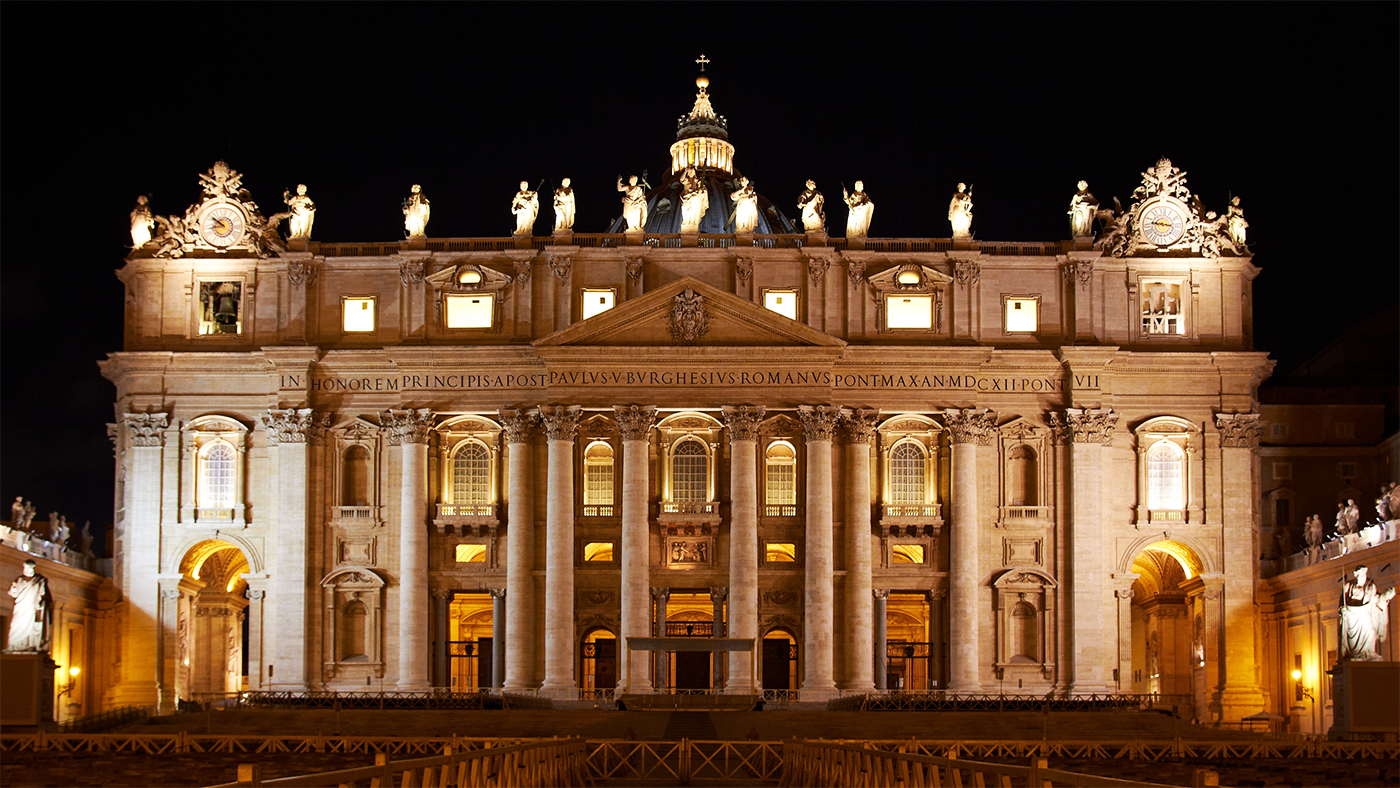
The imposing front façade of the Basilica of St. Peter - Foto di Max_Ryazanov, CC BY-SA 3.0
At the portico, consisting of five entrances, there are on the right the equestrian statue of Emperor Constantine and on the left the equestrian of Charlemagne. The famous Porta Santa (Holy door), only opened in Jubilee years, is the last one on the right and is decorated with scenes of the Old and the New Testament.
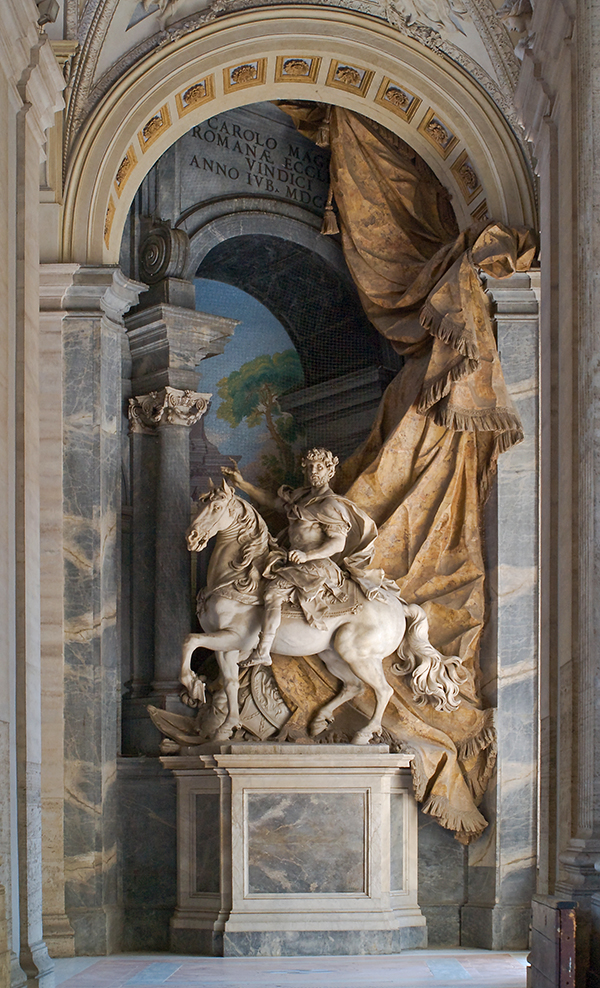
The equestrian statue of Charlemagne - Photo by Myrabella - Wikipedia CC BY-SA 3.0
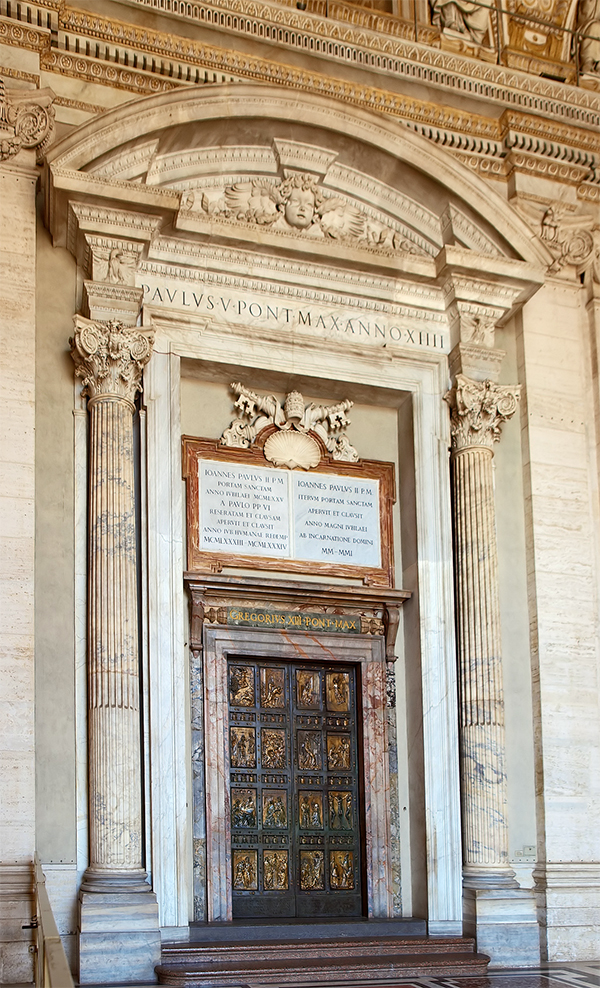
The Holy Door
THE DOME
The dome, emblem of the Basilica and one of the symbols of Rome, is 133 meters high, has a diameter of 41.50 meters and a 537-steps staircase that goes from the bottom of the building up to the top of the lantern.
It was designed by Michelangelo Buonarroti at the end of 1546, under the papacy of Paul III Farnese. It was built by Giacomo Della Porta, who followed the project of Michelangelo and completed the construction in only two months thanks to the contribution of 800 men.
VISIT THE ST.PETER DOME CLIMB AND THE VATACOMBS

The dome of the Basilica of St. Peter
Afterwards, under the papacy of Clemens VIII, the construction of the lantern was completed and the dome was coated with sheets of lead. On 18th November 1593 the big gilt-bronze sphere surmounted by the cross by Sebastiano Torrigiani was placed on the cusp of the small lantern.
If you have never done it, you must absoluty go up the dome to experience a fantastic panoramic view of Rome, with St. Peter's Square, Castel Sant’Angelo and the Tiber river in the background. Only it is 133 meters high and 551 steps! But don't panic, for the laziest of you, there is a comfortable lift that makes everything easier! Find out more details in the box at the bottom of the page.
THE BASILICA OF ST. PETER: A LOOK TO THE INSIDE
The construction of the basilica started under the papacy of Pope Julius II in 1506 and it was concluded in 1602 under Pope Paulus V. Few know that the new church was actually placed on top of a preexisting building, that the emperor Contastino had commanded to build in the 4th century. This was the point where the Circus of Nerone rised and the same place where St. Peter was reportedly crucified and buried.
Crossing the splendid nave, you will arrive at the famous Baldachin of St. Peter, a monumental architectural structure created by Bernini in the 12th century. It is located inside the main altar, to indicate where the Tomb of St. Peter was. The bronze used for the four columns of the baldachin was taken from the Pantheon, another great monument of the eternal city that gives evidence of the unbridled ambition of Pope Urban VIII, who ordered the work.
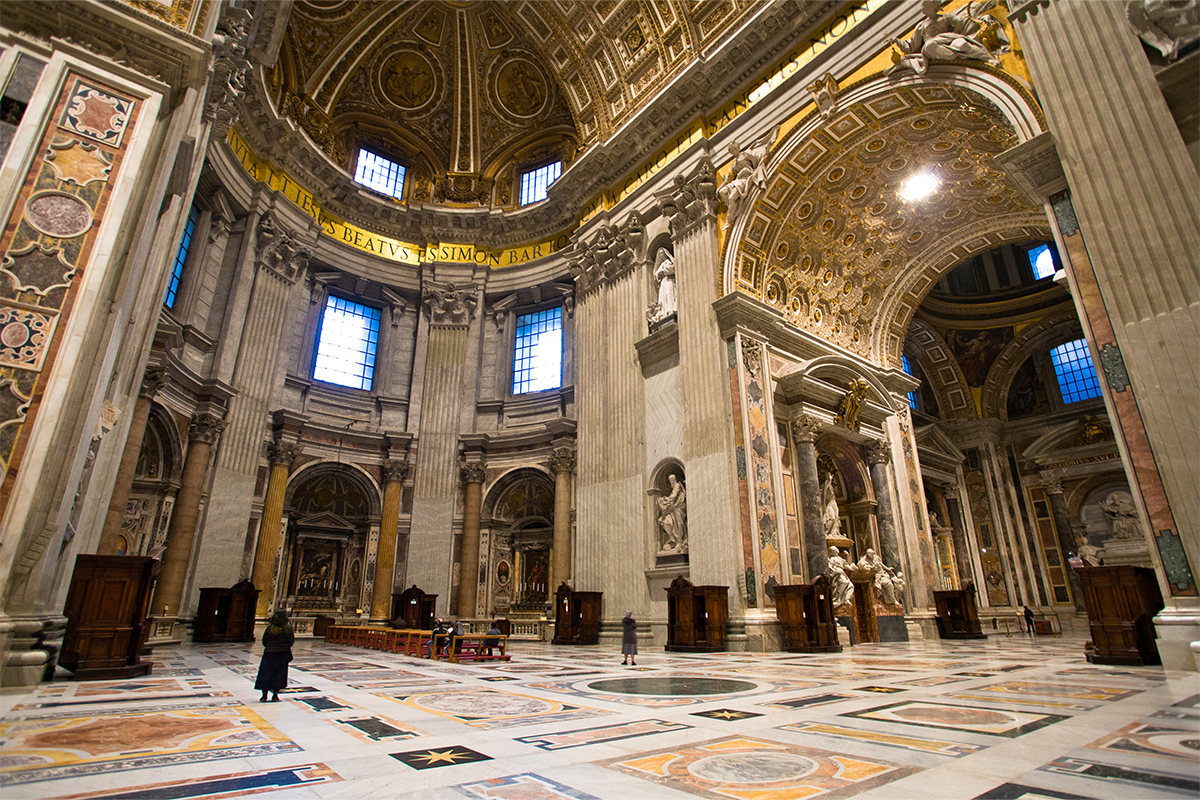
The splendid Baldachin of St. Peter's at the peak of the nave
In the first chapel on the left aisle, there the Pietà by Michelangelo. A universally famous work of art that the artist sculpted from a single block of Carrara marble when he was still very young. The work is today protected by a special bulletproof glass wall, necessary after an act of vandalism in 1972.
The Pietà is an absolute masterpiece. Admiring the statue, you can't help but noticing the extraordinary simplicity of the bodies sculpted by Buonarroti. You will feel the nedd to touch it, to make sure that they are not real. The face of Jesus let go in the hands of his mother Mary, but at the same time calm, is a way for the artist to underline that Jesus' sacrifice has reunited the man with God. Emblematic the movement of Mary's left hand, seeming to be inviting the observers to think about the importance of the divine gesture.
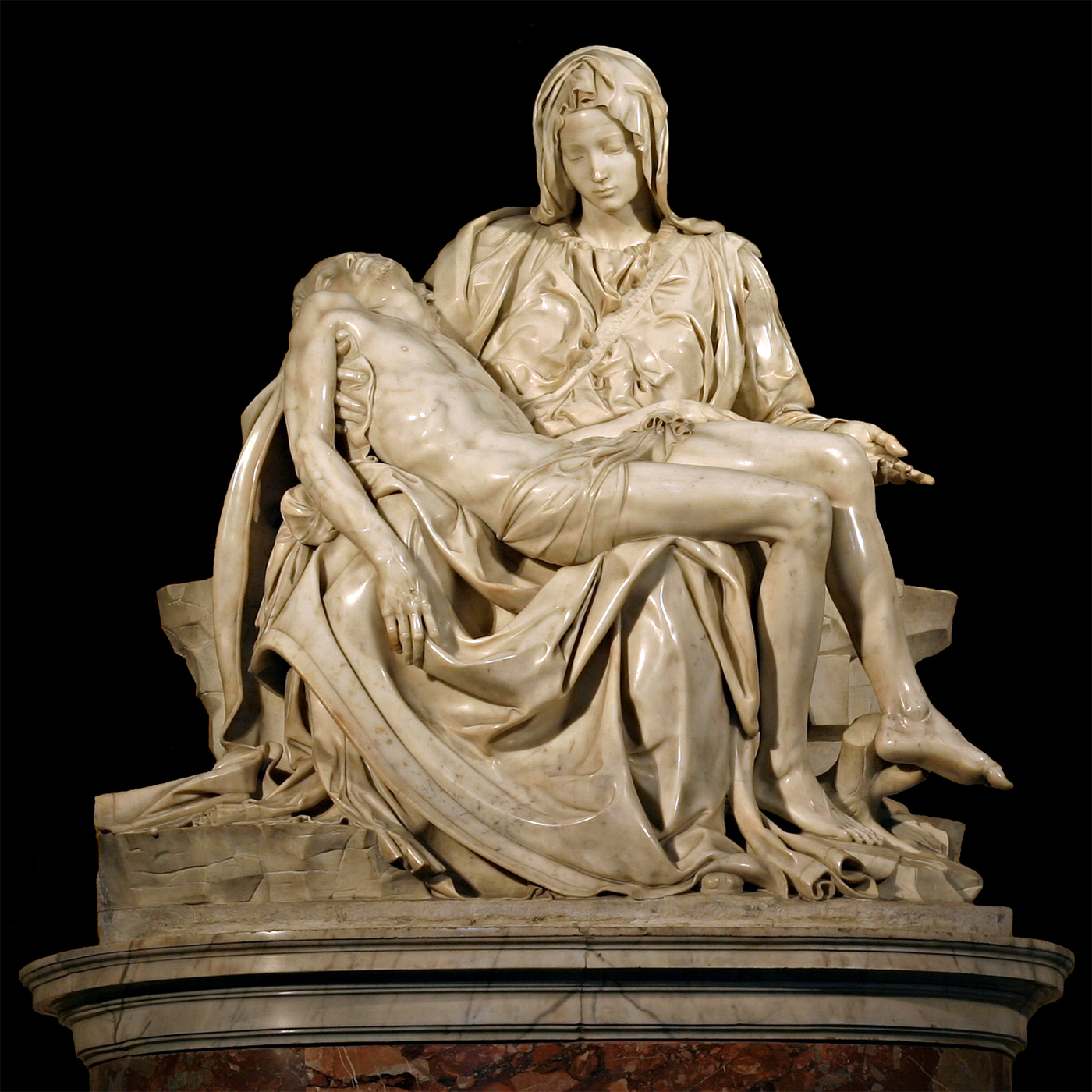
The Pietà by Michelangelo Buonarroti in all its splendour - Wikimedia.org , CC BY 2.5
The wonders of the Basilica of St. Peter don't end up here! We have tried to let you have a taste of what you will find during your visit. We are aware that the emotions that you will feel seeing it live can't be expressed in an article.
The Basilica of St. Peter is, actually, a huge container of art, apart from being a great work of art itself. You just need to think that in over a century, many architects have worked on it, like Bramante, Raffaello, Antonio da Sangallo the Younger, Peruzzi, Michelangelo, Giacomo della Porta and Maderno.
Inside the Basilica, in addition to the works we have already mentioned, are kept an astounding amount of works of art, like the bronze statue of St. Peter, the Tomb of Leon XI, the monument to Pius VII, the Tomb of Alexander VII, the Vatican Grottoes below the Basilica, where the Tomb of Paulus II can be found, the octagonal rooms, the organ and many other marble statues of saints and eminent personalities.
The article ends here. Tell us about your experience in first person, leave a comment and, if you liked it, share this article with your friends!
Before you leave us, what do you say about reading also our post about St. Peter's Square?
Useful information
Basilica of St. Peter
- HOW TO GET THERE
- The Basilica of St. Peter is in the square with the same name. It is well linked by public transport and you can reach it in many ways.- From Civitavecchia: Reach Civitavecchia Train Station and get on the first regional train bound to Rome. After about 45 minutes get off directly at Roma San Pietro Station. From there you can walk towards the square (10 minutes) or take bus 64 from Piazza della Stazione di San Pietro and get off after 2 stops at Via di Porta Cavalleggeri.You are one step away from the square.To check the trains timetable visit the official site of Trenitalia.
- TIMETABLES
- The Basilica- From 1st October to 31st March: 9.00-18.30- From 1st April to 30th September: 9.00-19.00*To be admitted to the Basilica suitable clothing is required.The Dome- From 1st October to 31st March: 8.00-17.00- From 1st April to 30th September: 8.00-18.00The Vatican Grottoes- From 1st October to 31st March: 7.00-17.00- From 1st April to 30th September: 7.00-18.00The entrance is at the transept of the Basilica.Tomb of St. Peter and NecropolisContact the Excavation Office, Monday-Friday 9.00 - 18.00 and Saturday 9.00 - 17.00Telephone + 39 0669885318 | Fax + 39 0669873017 | e-mail: scavi@fsp.va
The entrance is at Arco delle Campane. For further information click here. - PRICES
- The BasilicaFree admission.The Dome- Ticket €7.00: lift up to the terrace and then 320 steps by walk.- Ticket €5.00: 551 steps by walk.- Reduced ticket €3.00: reductions for schools.Tomb of St. Peter and Necropolis- Single ticket € 13.00 (specialist guide included)



 PORT MOBILITY CIVITAVECCHIA
PORT MOBILITY CIVITAVECCHIA










